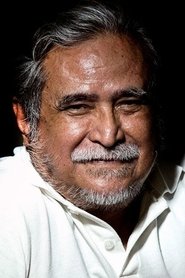
Kembang Kertas
Because of his wife’s encouragement, Prabowo enters a dangerous business and is eventually imprisoned. While waiting for his trial, his business partner, Wahyuni the divorcee, whom he also loves, bails him out. Their children Ani and Reni, who have to downgrade from their mansion to a flat, suffer from the shock of change. They resort to drugs and prostitution to escape reality. While the mother is sick, Wahyuni becomes intimate with Prabowo. Once found out, they slowly try to solve each problem. Wahyuni is willing to reconcile the entire family. So Rini attempts to become a photographer, by following her boyfriend, a tour guide in Bali. There is another character, a journalist, who comes in and out of the film, and functions as a commentator and witness of their lives. The dialogue veers on philosophical messages as director, Slamet Rahardjo, tries to represent both the lower and upper classes, mixing his narrative style with realism.
- Overview
- Cast
- Crew
Kembang Kertas
- Overview
- Cast
- Crew
Status
Released
Release Date
Jan 1, 1984
Runtime
1h 44m
Genres
Drama
Original Title
Kembang Kertas
Production Companies
PT Nusantara Film
Director
Slamet Rahardjo
Description
Because of his wife’s encouragement, Prabowo enters a dangerous business and is eventually imprisoned. While waiting for his trial, his business partner, Wahyuni the divorcee, whom he also loves, bails him out. Their children Ani and Reni, who have to downgrade from their mansion to a flat, suffer from the shock of change. They resort to drugs and prostitution to escape reality. While the mother is sick, Wahyuni becomes intimate with Prabowo. Once found out, they slowly try to solve each problem. Wahyuni is willing to reconcile the entire family. So Rini attempts to become a photographer, by following her boyfriend, a tour guide in Bali. There is another character, a journalist, who comes in and out of the film, and functions as a commentator and witness of their lives. The dialogue veers on philosophical messages as director, Slamet Rahardjo, tries to represent both the lower and upper classes, mixing his narrative style with realism.






